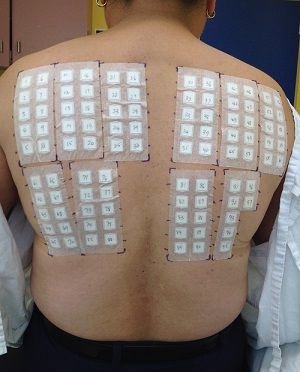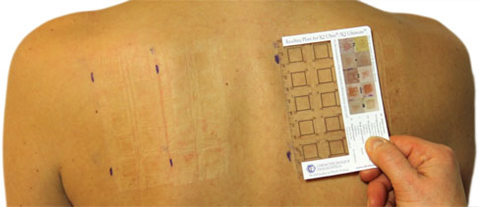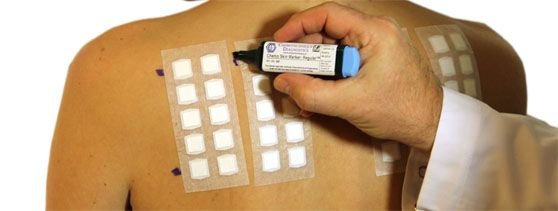"Patch Testings" A Medical Procedure For The Diagnosis Of Allergic Contact Dermatitis (ACD)
In this article today, I’m going to elaborate on “Patch Testings” based on my cousin’s experience and some research I carried out. In case you missed my last article, I wrote about Allergic Contact Dermatitis and its symptoms, causes and the ways it can be managed.
What is Patch Testings?
Patch testings is a simple procedure used to help diagnose Allergic Contact Dermatitis also known as ACD.
This is used to identify if there are specific substances that are causing skin problems, a healthcare provider may recommend this procedure if the patient is experiencing symptoms such as itching, redness, swelling or skin that is warm to the touch.
Allergic Contact Dermatitis can occur when a person's immune system reacts to a substance such as a fragrance, preservative or a number of other chemicals found in the environment. When the skin reaches the maximum limit of ability to tolerate a chemical ACD can occur. It can happen at any time even with products that have been used for years.
A healthcare provider will most likely discuss with their patients, asking them the following questions:
- How long they’ve had symptoms
- What products they were using in their home and workplace
- General health, hobbies and occupation
- Family and medical history
Medical Procedures
Testing helps the healthcare provider determine which possible substances a patient might be allergic to and whether a patch test is right for them. A patch test exposes the skin to the substances most likely to be the cause of symptoms and then tries to recreate that allergic reaction on a small scale where the patch is placed.

(Patches affixed to upper back)source
You can see by the image on the right that one or more panels containing small samples of the substance in question will be placed on the skin usually on the upper back for 48 hours. This allows for penetration of the chemicals into the skin.
If a dermatitis symptom is severe, the healthcare provider may wait until they are less severe to schedule the patch test for the patient.
Typically, they'll be scheduled for several appointments in order to complete their patch test. At the first visit, the healthcare provider will place the patches on the back of their patient or inner arm. At the second visit 48 hours later the patches will be removed and the patch test sites will be evaluated. At the third visit 72 to 96 hours later, they will return to the clinic so that the healthcare provider can read and finalize the results and explain them.

(Patches removed and evaluated)source
In some instances, they’ll will need to return for a fourth visit, the healthcare provider may ask to look at the sites one week or even one month after patch test placement to see if there are any further reactions during this time. Weeks before a patch test, the healthcare provider may ask that medications such as oral steroids or immunosuppressants should be stopped also they will need to protect the areas where the patches will be placed from exposure to sunlight and UV radiation such as tanning beds for at least two weeks prior to testing.
If hairs are to be removed, patients will need to shave. The provider will tell them when to do that. Topical medications on the back should be avoided as well for at least two weeks before the test. On the day of patch tests, patients are expected to come to the clinic with their back clean and free of any lotions or ointments, also loose cotton clothing should be worn. The Healthcare provider will prepare the skin, making sure it is clean and dry.
The panels will be placed on the skin and extra tape may be used by the healthcare provider to ensure the patch tests adhere properly for the 48 hour test time. Most importantly, patients are warned not get the patch test sites wet, this means no showering until the final reading has been performed. They can take sponge baths, vigorous physical activity should be avoided while the patch test is on the skin.
The healthcare provider’s mission is to recreate the allergic reaction, so patients should be prepared for the test sites to be itchy and a little uncomfortable. These symptoms are usually manageable most patients above all, they shouldn’t scratch up the panels or remove them until instructed by the healthcare provider. If there is itching, burning sensations or other symptoms become severe, the healthcare provider should be contacted immediately.

(Patches indicated with a marker)source
A flare-up of dermatitis elsewhere on the body can at times occur, it is important that patients come back at the scheduled time usually 48 hours later to have their patch test removed. The healthcare provider will use a marker to indicate the patch test was on the skin, once the patch test is removed the healthcare provider may let the skin rest for 20 to 30 minutes before they do the 48 hour read.
Once the patch test is off, it is still important that they don’t scrub or get the test sites wet because water will remove the markings on the back and interfere it with a test final diagnosis. Patients may be able to shower after the patches are removed if they avoid getting water directly on their test sites. They are to return back to the clinic for the next reading which is typically 72 to 96 hours after the patch test was placed so the healthcare provider wouldn’t miss any late reactions.
Additional readings at one week or one month are occasionally necessary and the healthcare provider gives the necessary instructions about this, once the final readings have been done, the healthcare provider will discuss both positive and negative reactions with their patient and give them additional information to help manage their symptoms.
Thanks for reading. Follow me @creativity101 for more.

Hello @creativity101
This is very valuable information. A lot of people don't really take these tests seriously. It does need to be paid more attention to. Thanks for sharing!
@melanie00